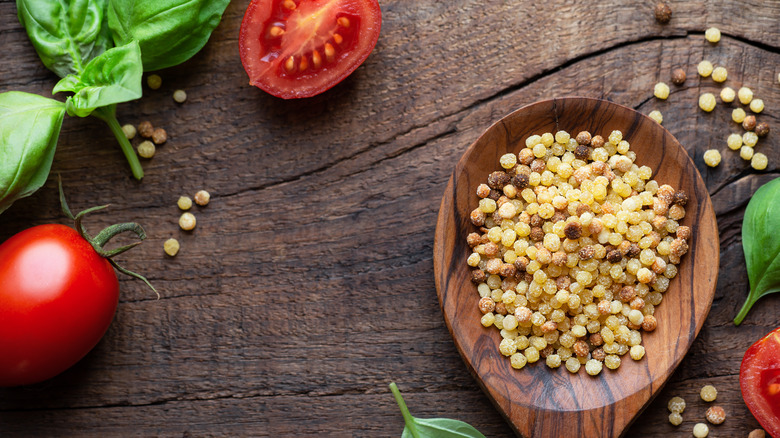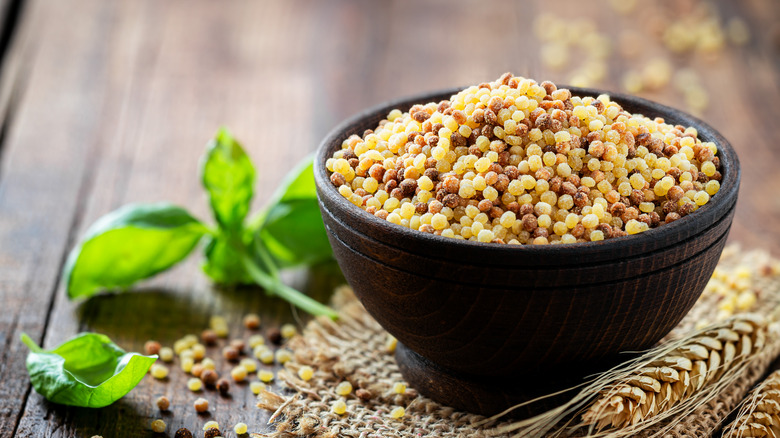What Is Fregola And How Do You Use It?
Fregola — sometimes called fregula or fregola sarda — looks like a grain but is actually a tiny, spherical pasta. This beguiling, toothsome food can be confused with similar small pastas, namely Israeli couscous and orzo. Fregola is even referred to as Sardinian couscous, according to Fine Cooking – although it differs in significant ways from its Israeli culinary cousin. MasterClass says fregola is handmade, unlike Israeli couscous, and it's a little larger.
Fregola is slightly nutty and brings a unique chewiness to whatever it is added to. Lucky Belly describes how to make the Sardinian pasta: Sprinkle or drizzle water over durum wheat semolina, and roll the dampened flour with the palm to make tiny balls. The word "fregola" originates from the Latin word "fricare," which means "to rub." The small spheres are then toasted. After toasting, the tiny beads of fregola can vary in color, some of them taking on more of a toasted, brown appearance. Next, boil in water, stock, or broth — and voila! Fregola is ready to enjoy.
Fregola works well in tomato sauces, soups, and salads
Fregola has been made in Sardinia — one of the large Italian islands — as far back, perhaps, as the 10th century, according to The Pasta Project. The first documented reference to fregola is from the 14th century.
Fregola doesn't have a strong taste itself, but its shape and texture make it great for delivering whatever flavors are added to it. Nigel Slater at The Guardian recommended putting fregola in a tomato sauce, which is how many Americans might first think to use a pasta. But fregola adds substance to soups, too, and gives salads some "backbone," as Slater put it.
Fregola is also commonly combined with seafood. The Pasta Project mentions a traditional Sardinian recipe involving fregola and small clams. The BBC wasn't so bound to tradition. The network's ambitious recipe throws mullet fillets, mussels, clams, scallops, and stewed squid in a pan with fregola.

